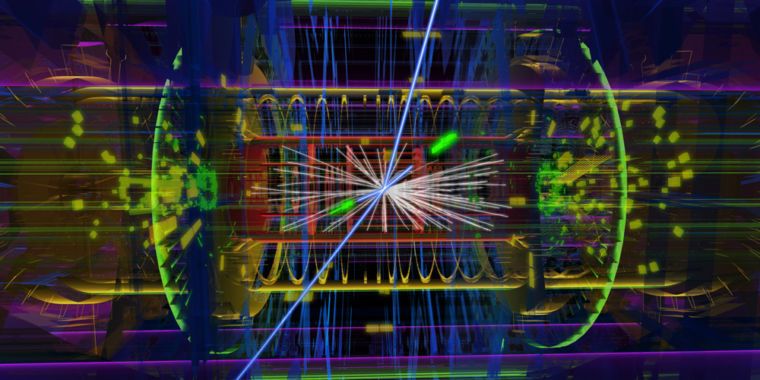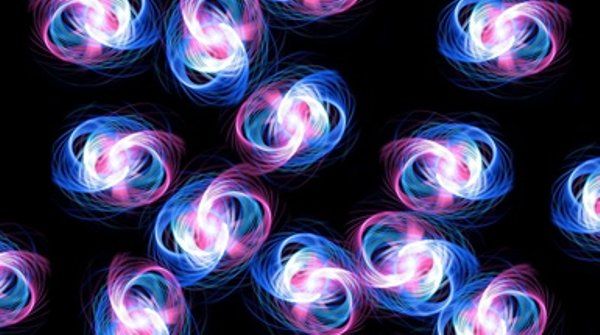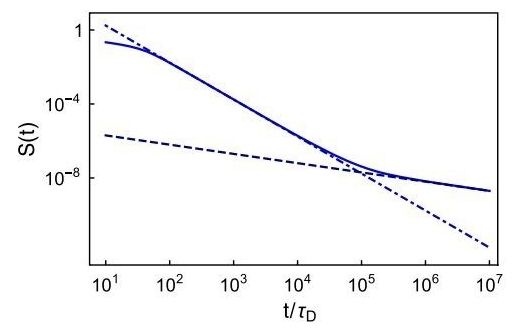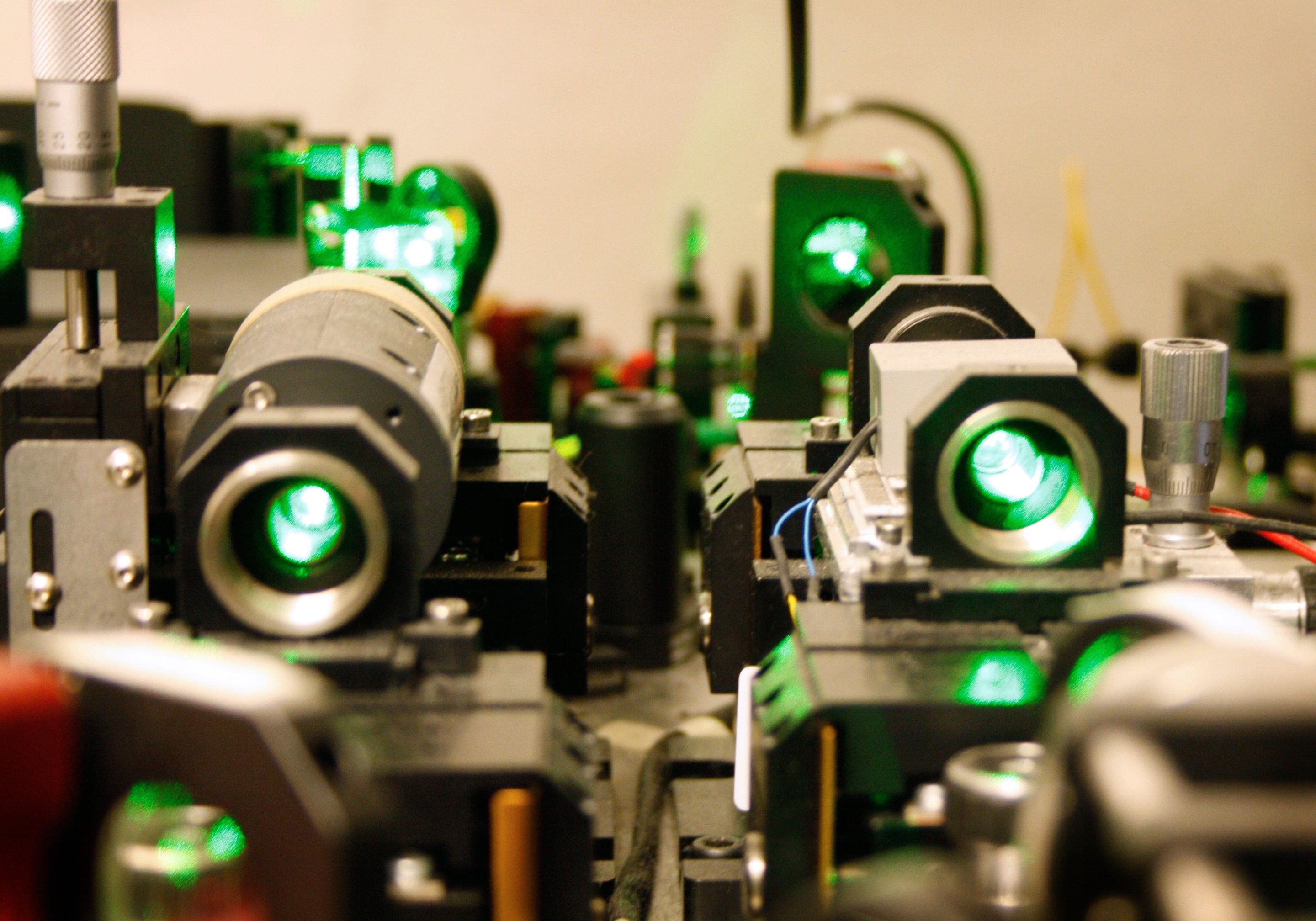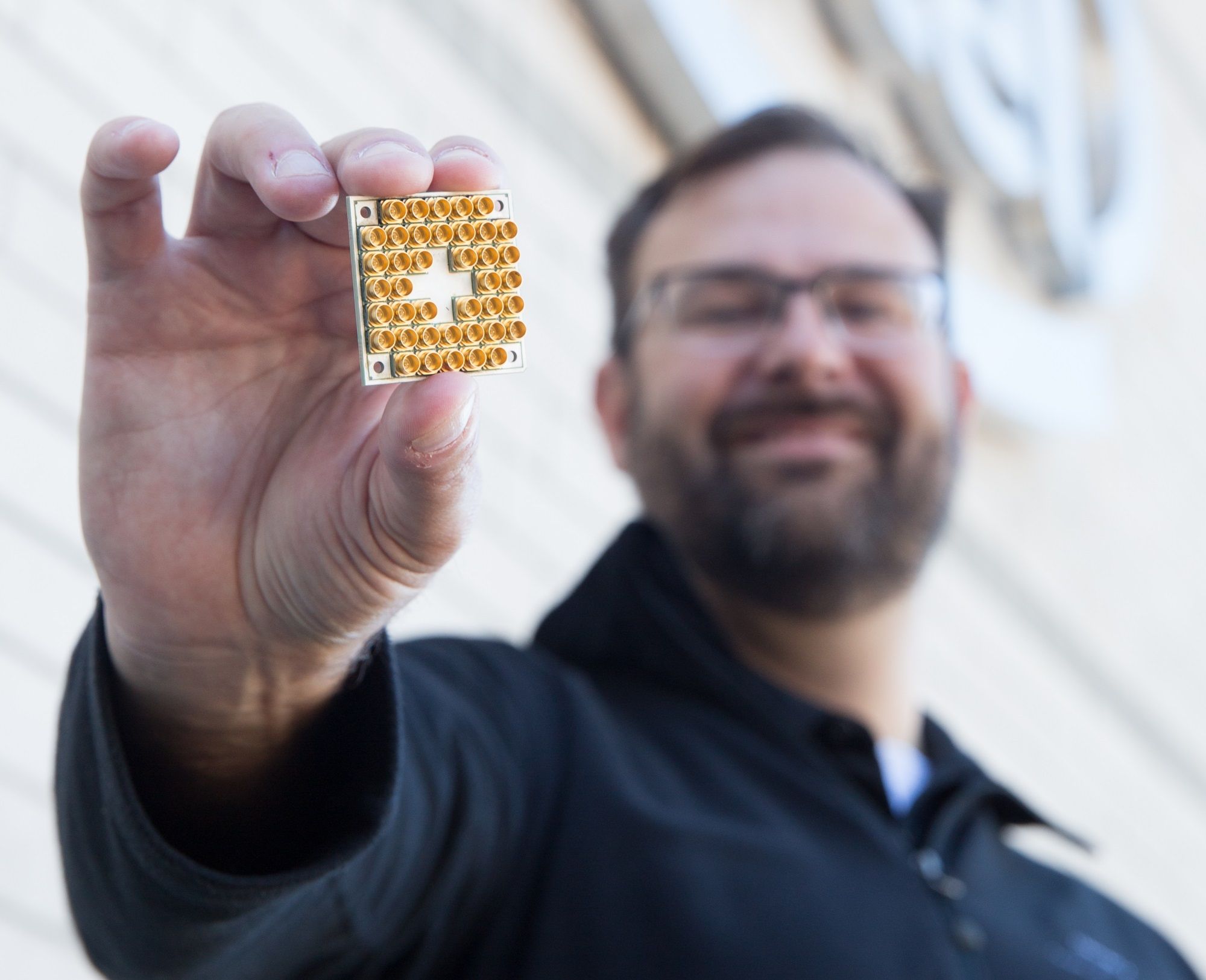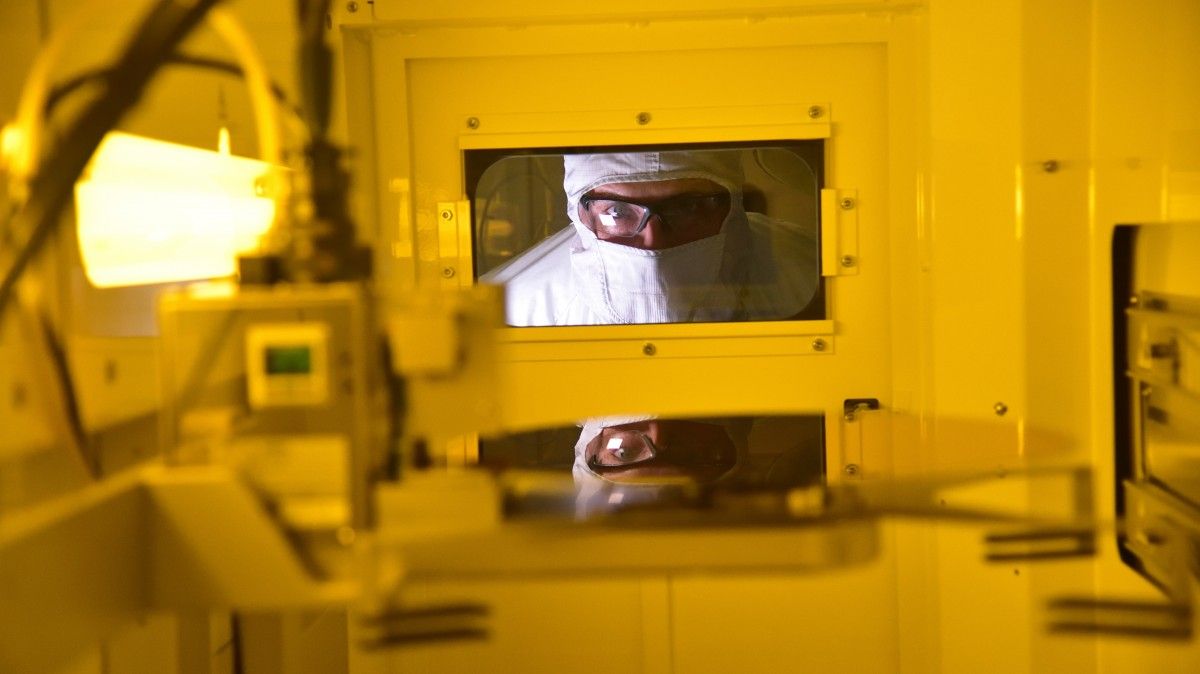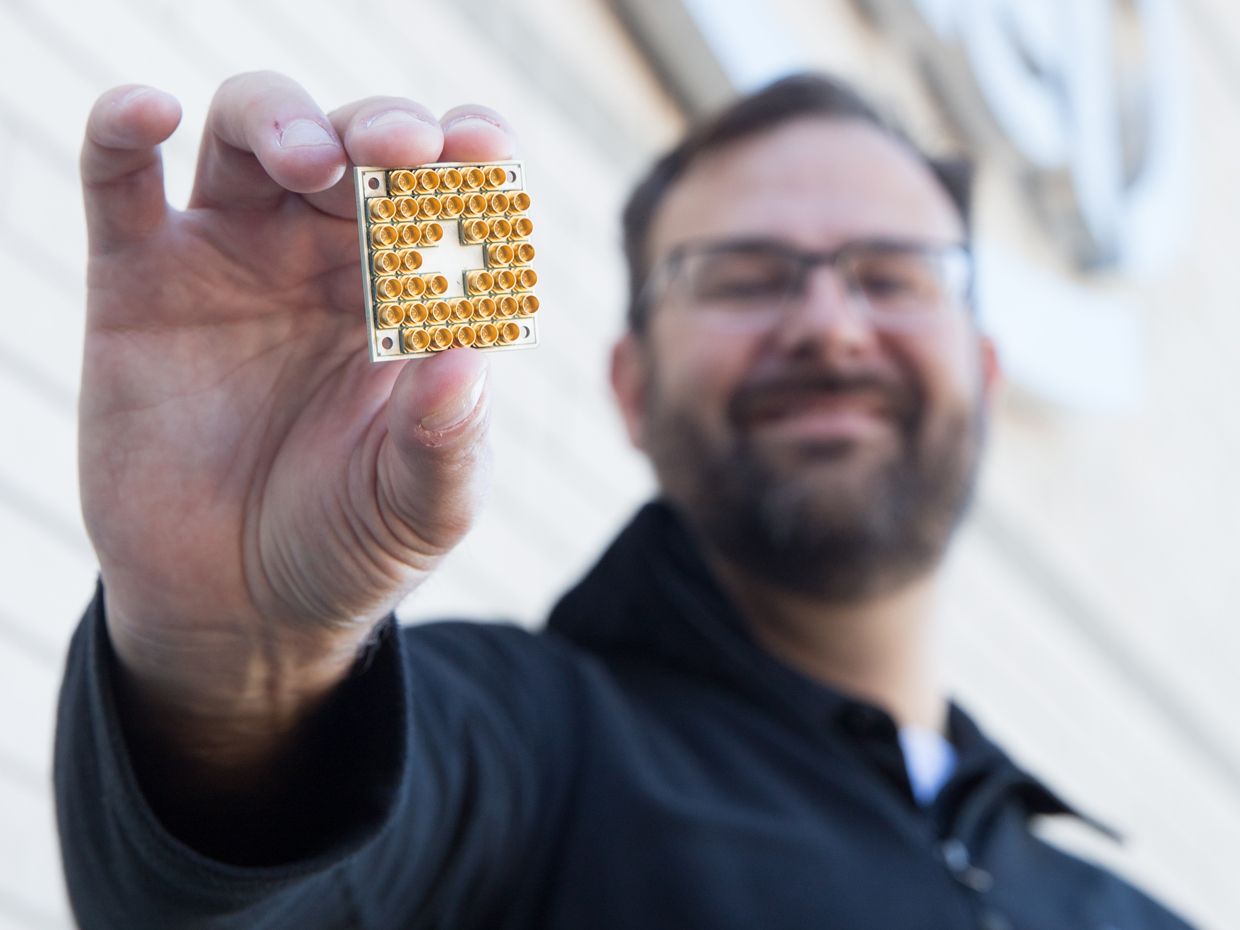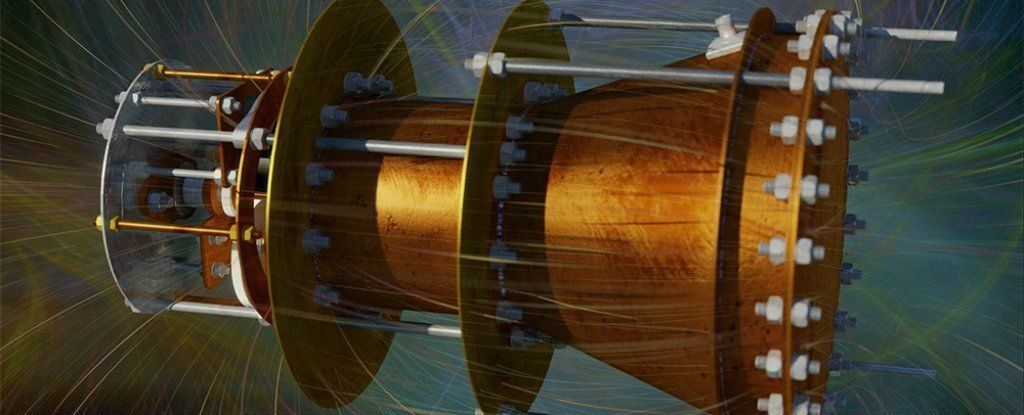Archive for the ‘quantum physics’ category: Page 689
Oct 22, 2017
Quantum Machine Goes in Search of the Higgs Boson
Posted by Andreas Matt in categories: computing, particle physics, quantum physics
D-Wave system shows quantum computers can learn to detect particle signatures in mountains of data, but doesn’t outpace conventional methods — yet.
- By Davide Castelvecchi, Nature on October 22, 2017
Oct 17, 2017
Violation of the exponential decay law discovered in open quantum systems
Posted by Saúl Morales Rodriguéz in categories: particle physics, quantum physics
(Phys.org)—Ever since the early days of quantum mechanics, the decay dynamics of unstable quantum systems has been thought to follow an exponential decay law, just like the one used to describe radioactive decay and many other natural processes. The exponential law in the quantum domain was originally proposed by George Gamow and later developed by Eugene Wigner and Victor Weisskopf. According to this law, when given a sample of unstable atoms, the number of those that are likely to decay during a brief period of time is proportional to the number of atoms present.
In the years since then, however, physicists have found that deviations from the exponential law can occur in unstable quantum systems, but only in those that are isolated from the external environment. This is because isolated systems are free from environmental decoherence, which makes it possible for the quantum decay products to reconstruct themselves back into their initial, pre-decayed states. Consequently, the decay is initially slower than that predicted by the exponential law, and in the later stages, the decay often exhibits a power-law behavior. Researchers have previously shown that this nonexponential decay can be harnessed for quantum control.
Now in a new study, physicists have theoretically shown that quantum decay processes can deviate from the exponential decay law not only when the system is isolated, but even when it is in contact with the external environment. The results suggest that an unstable quantum system can decay and subsequently return to its original state, even in the presence of environmental decoherence.
Oct 16, 2017
Chemical treatment improves quantum dot lasers
Posted by Saúl Morales Rodriguéz in categories: biotech/medical, nanotechnology, quantum physics
One of the secrets to making tiny laser devices such as opthalmic surgery scalpels work even more efficiently is the use of tiny semiconductor particles, called quantum dots. In new research at Los Alamos National Laboratory’s Nanotech Team, the ~nanometer-sized dots are being doctored, or “doped,” with additional electrons, a treatment that nudges the dots ever closer to producing the desired laser light with less stimulation and energy loss.
“When we properly tailor the compositional profile within the particles during their fabrication, and then inject two or more electrons in each dot, they become more able to emit laser light. Importantly, they require considerably less power to initiate the lasing action,” said Victor Klimov, leader of the Nanotech team.
In order to force a material to emit laser light one has to work toward a “population inversion,” that is, making the number of electrons in a higher-energy electronic state exceed the number that are in a lower-energy state. To achieve this condition normally, one applies an external stimulus (optical or electrical) of a certain power, which should exceed a critical value termed the “optical-gain threshold.” In a recent paradigm-changing advance, Los Alamos researchers demonstrated that by adding extra electrons into their specially designed quantum dots, they can reduce this threshold to virtually zero.
Continue reading “Chemical treatment improves quantum dot lasers” »
Oct 15, 2017
Researchers report reversal of current flow in a quantum system
Posted by Saúl Morales Rodriguéz in categories: particle physics, quantum physics
In a classical thermodynamic system, heat current flows from the hotter body to the colder one, or electricity from the higher voltage to the lower one. The same thing happens in quantum systems, but this state can be changed, and the flow of energy and particles can be reversed if a quantum observer is inserted into the system.
This is the main result obtained by the group led by Professor Ángel Rubio of the UPV/EHU and of the Max Planck Institute PMSD, together with collaborators at the BCCMS centre in Bremen. Their study has been published in npj Quantum Materials.
In macroscopic objects such as a current of water, observing the current does not affect the flow of the water and, in accordance with the laws of classical thermodynamics, this flow would take place from the upper to the lower part of the system. However, in quantum systems, “the process of observation changes the state of the system, and this makes it more likely that the current will be made to flow in one direction or another,” says Ángel Rubio, a professor with the Hamburg-based Max Planck Institute for the Structure and Dynamics of Matter.
Oct 15, 2017
A single photon reveals quantum entanglement of 16 million atoms
Posted by Saúl Morales Rodriguéz in categories: encryption, quantum physics
Quantum theory predicts that a vast number of atoms can be entangled and intertwined by a very strong quantum relationship, even in a macroscopic structure. Until now, however, experimental evidence has been mostly lacking, although recent advances have shown the entanglement of 2,900 atoms. Scientists at the University of Geneva (UNIGE), Switzerland, recently reengineered their data processing, demonstrating that 16 million atoms were entangled in a one-centimetre crystal. They have published their results in Nature Communications.
The laws of quantum physics allow immediately detecting when emitted signals are intercepted by a third party. This property is crucial for data protection, especially in the encryption industry, which can now guarantee that customers will be aware of any interception of their messages. These signals also need to be able to travel long distances using special relay devices known as quantum repeaters—crystals enriched with rare earth atoms and cooled to 270 degrees below zero (barely three degrees above absolute zero), whose atoms are entangled and unified by a very strong quantum relationship. When a photon penetrates this small crystal block, entanglement is created between the billions of atoms it traverses. This is explicitly predicted by the theory, and it is exactly what happens as the crystal re-emits a single photon without reading the information it has received.
It is relatively easy to entangle two particles: Splitting a photon, for example, generates two entangled photons that have identical properties and behaviours. Florian Fröwis, a researcher in the applied physics group in UNIGE’s science faculty, says, “But it’s impossible to directly observe the process of entanglement between several million atoms since the mass of data you need to collect and analyse is so huge.”
Continue reading “A single photon reveals quantum entanglement of 16 million atoms” »
Oct 13, 2017
Intel moves towards production quantum computing with new 17-qubit chip
Posted by Shailesh Prasad in categories: computing, quantum physics
Intel’s quantum computing efforts have yielded a new 17-qubit chip, which the company has just delivered to its partner in that field, QuTech in the Netherlands. It’s not a major advance in the actual computing power or applications — those are still in very early days — but it’s a step toward production systems that can be ordered and delivered to spec rather than experimental ones that live in a physics lab somewhere.
Intel’s celebration of this particular chip is a bit arbitrary; 17 isn’t some magic number in the quantum world, nor does this chip do any special tricks other quantum computer systems can’t. Intel is just happy that its history and undeniable expertise in designing and fabricating chips and architectures is paying off in a new phase of computing.
I chatted with Intel’s director of quantum hardware, Jim Clarke, about the new system.
Oct 12, 2017
The quantum revolution is getting closer: Intel is manufacturing 17-qubit chips
Posted by Sean Cusack in categories: computing, quantum physics
Manufacturing will be key to quantum computing, but don’t throw out your current processor just yet.
Oct 11, 2017
Intel Accelerates Its Quantum Computing Efforts With 17-Qubit Chip
Posted by Klaus Baldauf in categories: computing, information science, quantum physics
Intel says it is shipping an experimental quantum computing chip to research partners in The Netherlands today. The company hopes to demonstrate that its packaging and integration skills give it an edge in the race to produce practical quantum computers.
The chip contains 17 superconducting qubits—the quantum computer’s fundamental component. According to Jim Clarke, Intel’s director of quantum hardware, the company chose 17 qubits because it’s the minimum needed to perform surface code error correction, an algorithm thought to be necessary to scaling up quantum computers to useful sizes.
Intel’s research partners, at the TU Delft and TNO research center Qutech, will be testing the individual qubits’ abilities as well as performing surface code error correction and other algorithms.
Continue reading “Intel Accelerates Its Quantum Computing Efforts With 17-Qubit Chip” »
Oct 8, 2017
This Overlooked Theory Could Be The Missing Piece That Explains How The EM Drive Works
Posted by Andreas Matt in categories: quantum physics, space travel
Ever since the EM drive first made headlines, science lovers have puzzled over how the propulsion system seems to produce thrust, despite the fact it’s ‘impossible’ according to one of the most fundamental laws of physics — Newton’s third law of motion.
Now a team of physicists have put forward an alternative explanation — it turns out the EM drive could actually work without breaking any scientific laws, if we factor in a weird and often overlooked idea in quantum physics — pilot wave theory.
For those who need a refresher, the crux of the problem here is that the EM, or electromagnetic, drive appears to produce thrust without any fuel or propellant.
